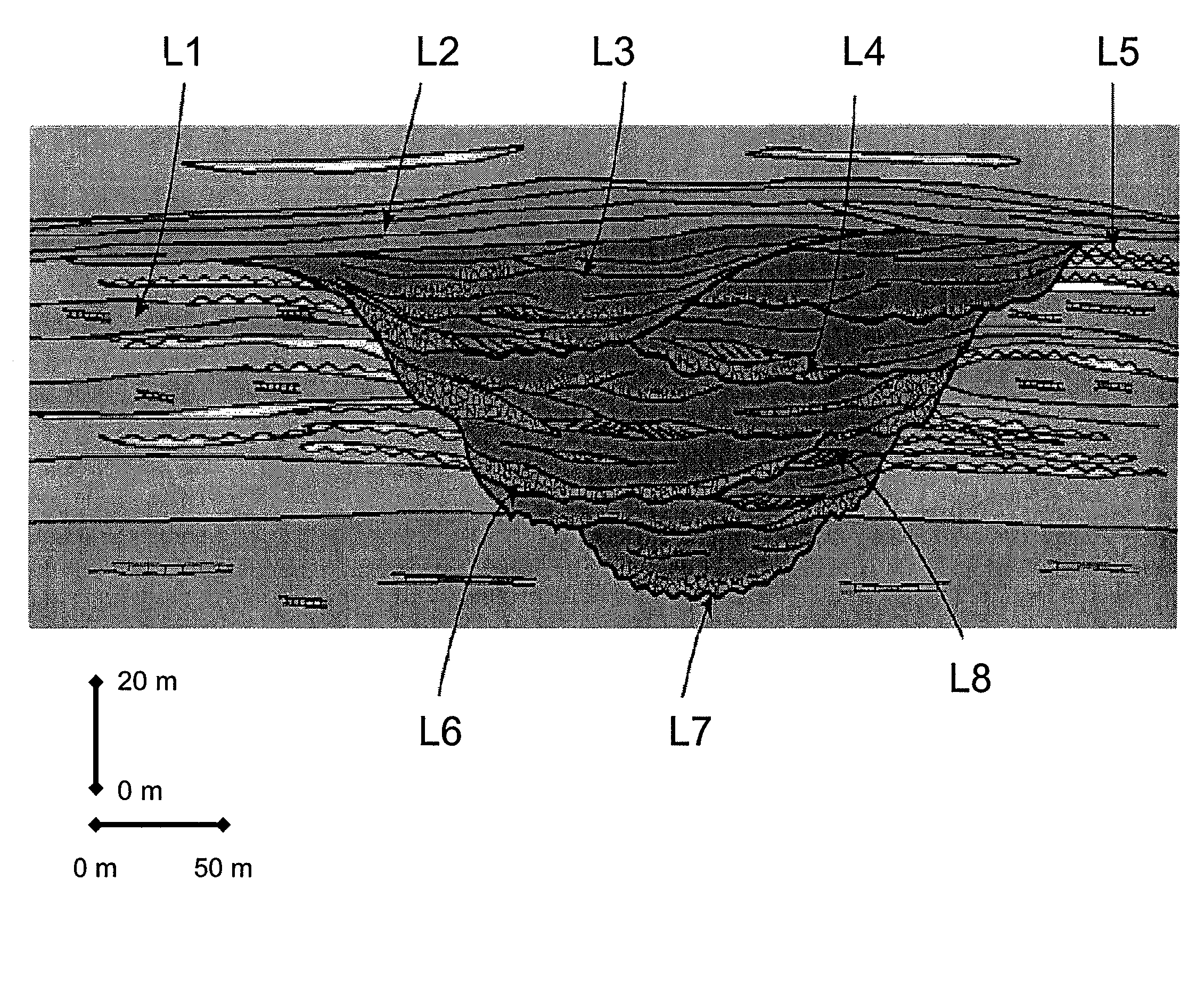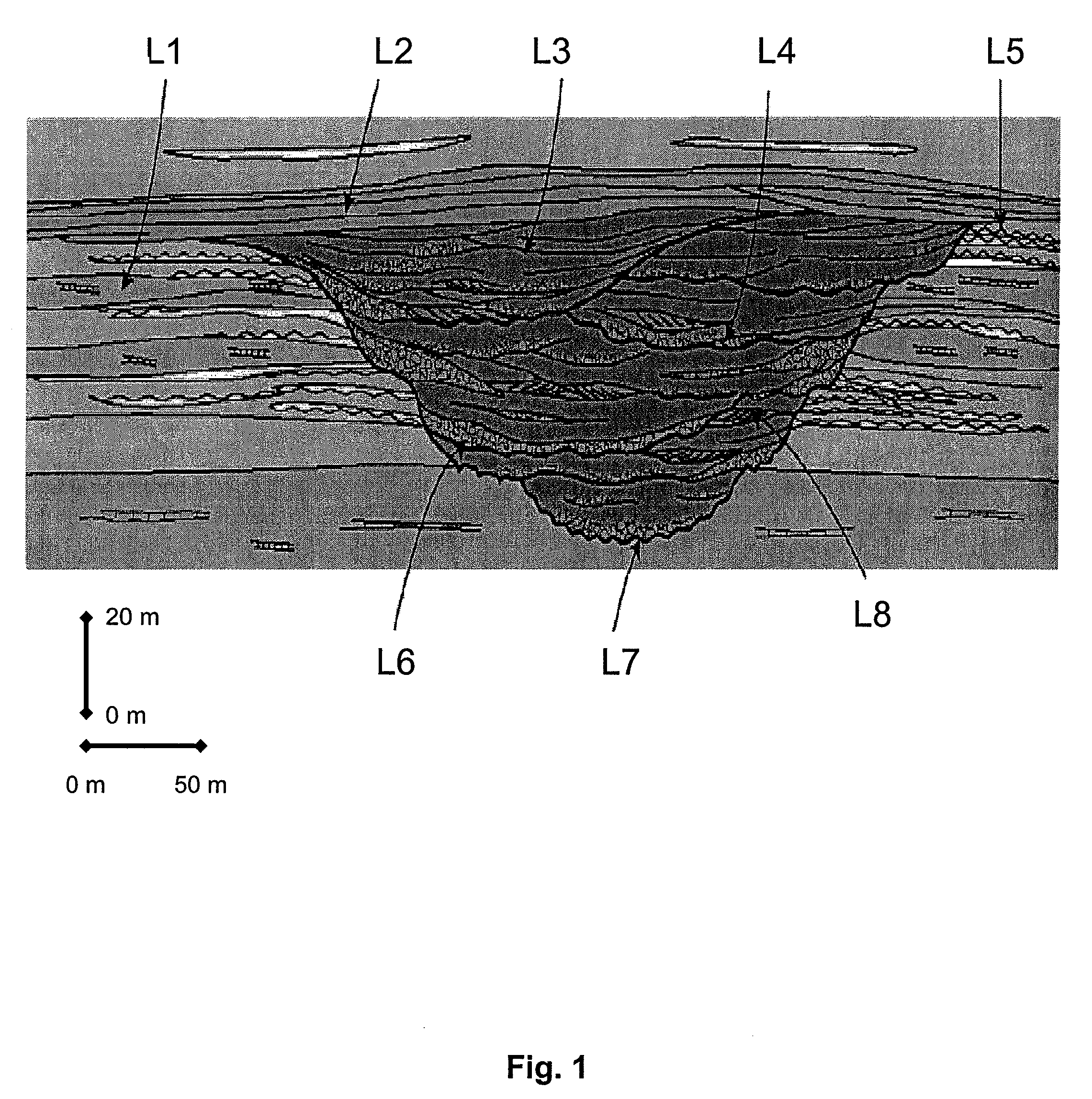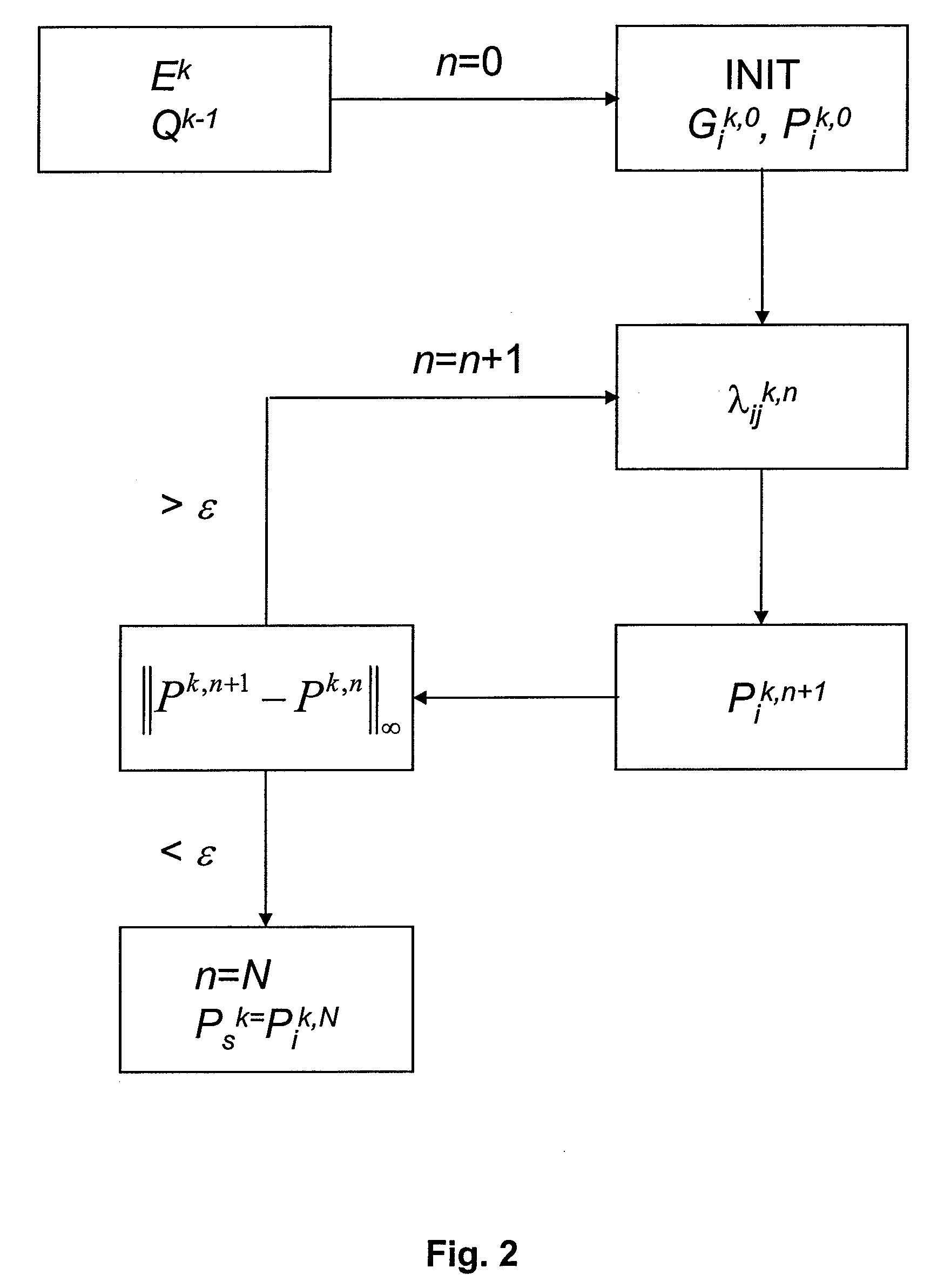Use of the stationary state of energy-exchanging cellular automata for modelling sedimentary architectures
a technology of cellular automata and stationary state, which is applied in the direction of seismology, seismology for waterlogging, using reradiation, etc., can solve the problems of sedimentary heterogeneity observed in deposits, flow turbidity, and sedimentary heterogeneity still, and the architectures they generate, and the stationary state of energy-exchanging cellular automata
- Summary
- Abstract
- Description
- Claims
- Application Information
AI Technical Summary
Benefits of technology
Problems solved by technology
Method used
Image
Examples
Embodiment Construction
[0041]The present invention relates to a method for reconstructing the architecture of layers made up of sedimentary materials of different lithologies of a petroleum reservoir deposited by one or more sedimentary currents such as turbidity currents. What is referred to as lithology is all of the macroscopic characters of sedimentary materials (sediments), such as the mineralogic composition, the texture, the color, etc. A sedimentary current is a fluid (water, air) carrying solid particles, the sedimentary materials.
[0042]The method is based on the use of a tool called “cellular automaton”. A cellular automaton is a discrete model. It is a grid of “cells” each one of which can take, at a given time, a finite number of “states”. The time is also discrete and the state of a cell at the time t depends on the state, at the previous time, of a finite number of cells making up its “neighborhood”. At each new unit of time, the same rules are applied for all the cells of the grid, producin...
PUM
 Login to View More
Login to View More Abstract
Description
Claims
Application Information
 Login to View More
Login to View More - R&D
- Intellectual Property
- Life Sciences
- Materials
- Tech Scout
- Unparalleled Data Quality
- Higher Quality Content
- 60% Fewer Hallucinations
Browse by: Latest US Patents, China's latest patents, Technical Efficacy Thesaurus, Application Domain, Technology Topic, Popular Technical Reports.
© 2025 PatSnap. All rights reserved.Legal|Privacy policy|Modern Slavery Act Transparency Statement|Sitemap|About US| Contact US: help@patsnap.com



